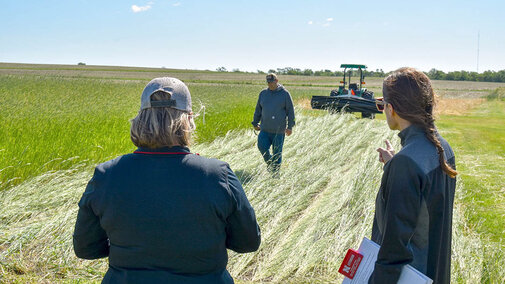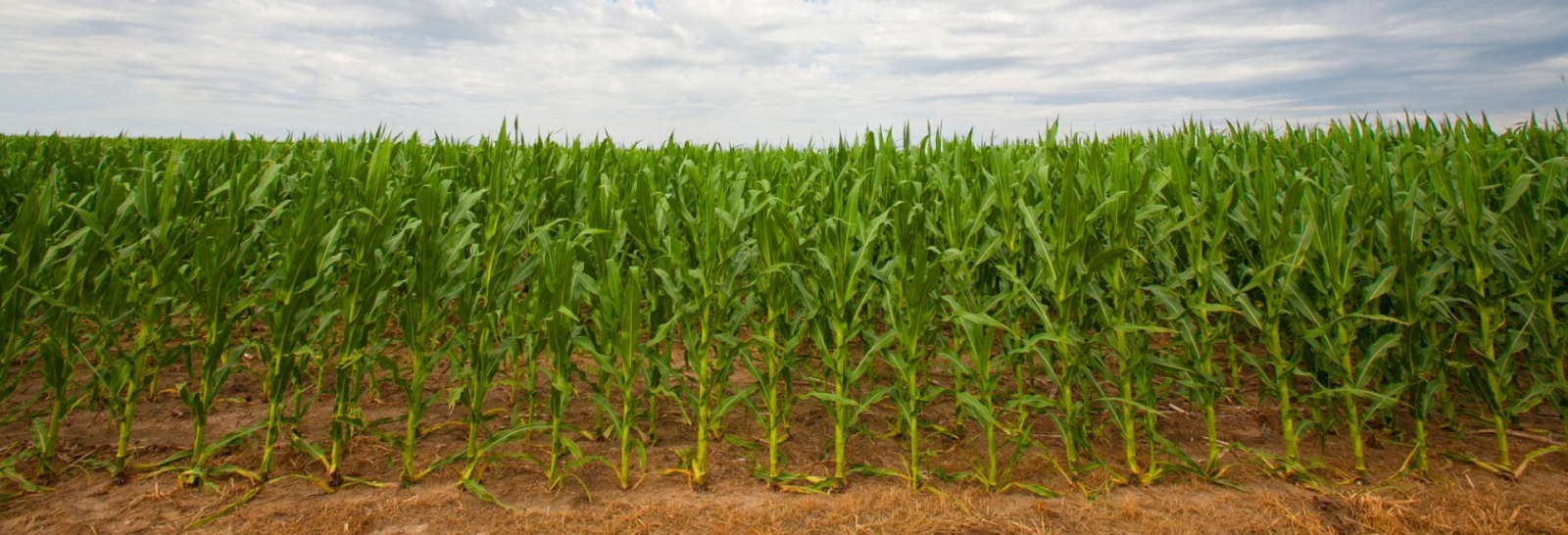Roller crimpers are gaining traction among Nebraska producers looking to reduce tillage and herbicide use — but success hinges on timing, crop selection and biomass.
During a May 22 workshop at the Eastern Nebraska Research, Extension and Education Center (ENREEC), attendees got a firsthand look at roller crimping in action, with demonstrations on cereal rye, triticale and wheat cover crops. The program also included discussion on management practices that improve termination rates and suppress weeds.
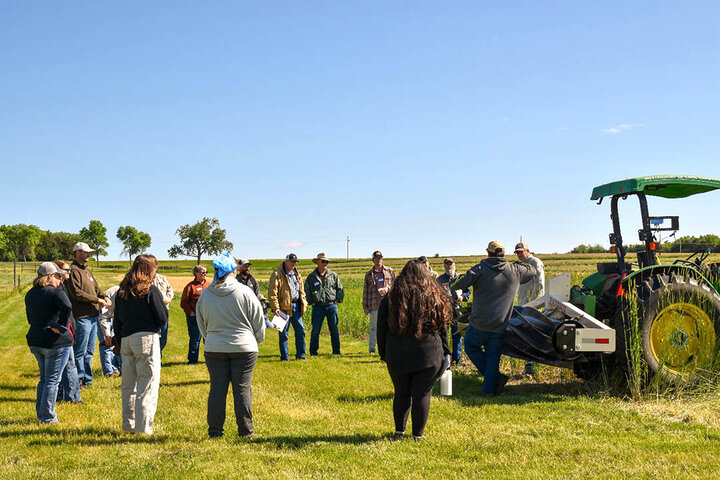
Roller crimpers mechanically terminate cover crops while leaving the soil undisturbed, ideally creating a thick mulch that suppresses weeds. They're commonly used by organic and regenerative farmers, as well as others looking to reduce herbicide inputs or improve weed control with cover crops.
In organic systems, roller crimping cover crops reduces the need for tillage if done correctly. Dr. Erin Silva from the University of Wisconsin-Madison has done extensive research in organic cover crop-based rotational reduced-tillage systems and has identified best management practices for managing the cover crop and subsequent cash crop. The following recommendations are based on her research in Wisconsin and on-farm trials conducted by Rich Little, former organic research technician in Nebraska.
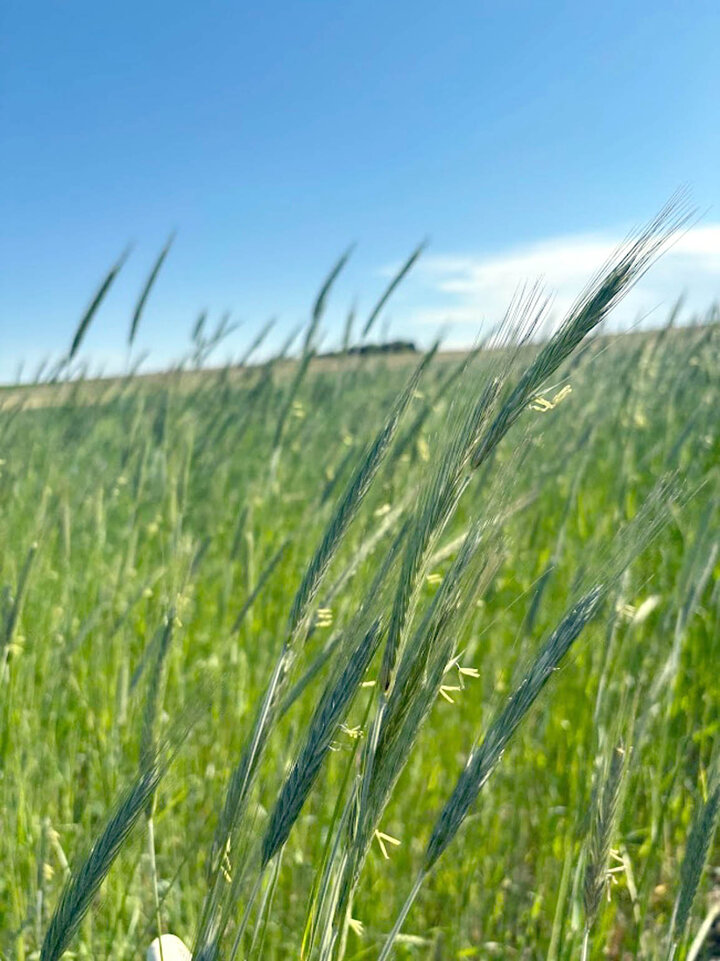
Cover crops must be managed for high biomass production for this system to be successful — at least 8,000 lb/ac of dry matter, or about 4 to 5 feet of height. Cereal rye is the most winter-hardy small grain, tall-growing and produces substantial biomass, making it the most popular choice for roller crimping. Triticale can also be used, especially in rotations where rye is undesirable. Although a bit more expensive, named varieties usually mature more evenly than VNS (Variety Not Stated), which may include a mix of types or unknown genetics — making consistent termination more difficult.
The cover crop should be drilled early (mid-to late September in eastern Nebraska), at a seeding rate of at least 100 lb/ac to ensure good establishment and tillering in the fall.
In the spring, when the cereal rye or triticale cover crop reaches flowering (anthers are visible on the seed heads, see Figure 2), it is time for crimping. Depending on the year and cover crop variety, flowering occurs between mid-May and early June in eastern Nebraska. If crimping before flowering, the cover crop may regrow. If crimping after flowering, viable seeds may form.
To get the best termination, or kill, of the cover crop, the crimper should have sharp blades that crimp or crush the cover crop stem while rolling over it. Crimping at an angle to the row direction may aid in covering the soil surface with cover crop residue, reducing weed growth. It may be necessary to fill the drums of the roller crimper with water and to make two passes in the same or slightly angled direction to effectively kill the cover crops (see Figure 3 and Figure 4).
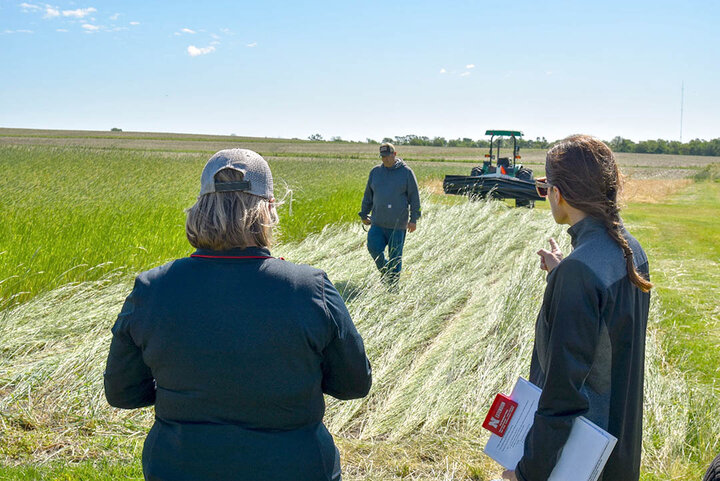
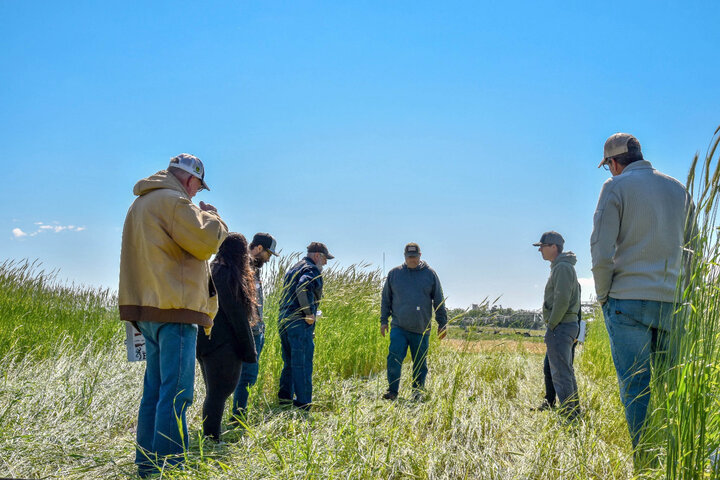
With the right cover crop selection, timing and equipment setup, roller crimping can be a valuable tool for reducing inputs and improving soil health. As interest in regenerative and organic systems grows, understanding the mechanics and management behind successful termination will be key to making this practice work in Nebraska fields.
